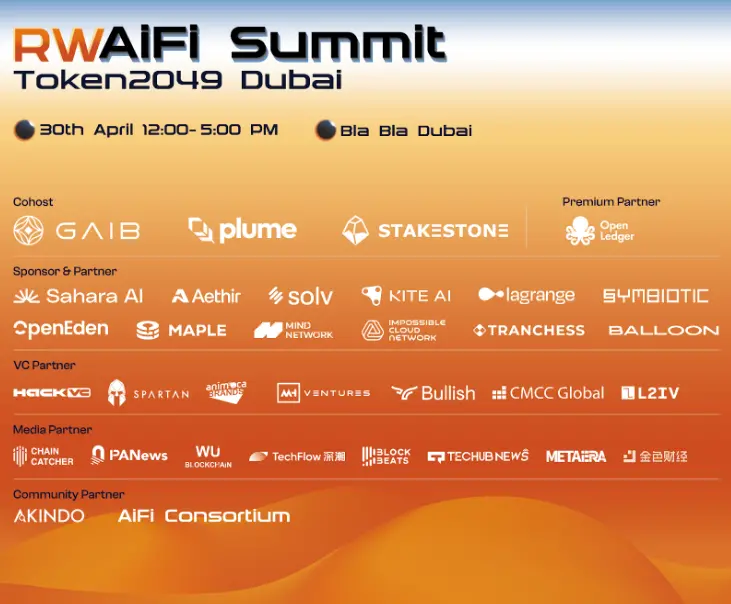作者:Shield SS-Vault

引言
熊市,对长尾资产持有者来说备受煎熬,处于卖与不卖的矛盾体中。
一方面,随着市场转熊以及项目热度下降,该项目代币交易量持续萎缩,流动性不高,用户亏损严重,试图割肉但又心有不甘;另一方面,长尾资产不同于主流资产,缺乏增值理财渠道,用户持有却又担心价值继续缩水。
如何破解上述难题,让长尾资产在熊市可以持续增值?去中心化永续期权协议 Shield 推出了一款去中心化期权金库理财 ——「Shield Vault」。该产品允许项目方或者做市商在无需许可的情况下应用定制好的链上期权策略,发行多样化的期权金库(SS-Vault/M-Vault/LP-Vault)以改善项目代币持有者的风险收益状况。
本文重点关注其中的 SS-Vault,其是一个单边质押金库,旨在应用金融工程精细化传统单币质押,更科学地提供流动性与市值管理工具集,用户可以根据自己的需求、特定的执行价格和特定代币的 APY 自主制定策略。自8 月 5 日以来,SS Vault 宣布与 iZUMi、XCarnival、Duet Protocol、Drive2、SOULMETA、Metagame、Socaverse、NAOS Finance、BovineVesre、TMON等十个项目达成合作,建立其社区专属的去中心化期权金库。
同时,Shield 在 Project Galaxy 上开放「Garden Planet 」活动,用户完成相关代币质押任务,即可获得 NFT 奖励;仅仅半个多月,目前已有超过 2万人通过 SS Vault 参与该活动,成为 Project Galaxy 热门榜首项目;品牌曝光度超过 4 万人,为单个项目平均带来超过 500 人的 New Holder(新持币者),影响空前。
作为永续期权缔造者,Shield 的转型,不仅打破了传统的单币质押市场困局,也满足了熊市环境下对理财产品的需求,更是对自我实现的不断突破。
一、SS-Vault:基于期权策略的单币质押平台
SS-Vault 是 Shield Vault 的一个重要核心组件,也是目前推出的第一个金库产品。
根据官方介绍,SS-Vault 是一个单边质押金库,使金库发行人能够为链上长尾资产定制链上备兑看涨(Covered Call)赎回策略;每个 SS-Vault 都由特定的协议发行,有助于最大限度地提高资本效率;使用 SS-Vault,用户可以根据自己的需求、特定的执行价格和特定代币的 APY 自主制定策略。
每个 SS-Vault 有两个 APY,根据实时代币价格,一个 SS-Vault 可以未行使或行使。对于未行使的保险库,用户获得基于代币的回报率。对于已行使的金库,用户获得基于美元的回报率,该回报率将高于初始存款价值。

(SS-Vault产品)
简单来说,SS-Vault 就是一个基于期权策略的单币质押锁仓挖矿平台。下面,我们结合一个案例来介绍其具体玩法:
- 用户小王持有 100 个 A 代币,想要参与了 A 代币在 Shield 的 SS-Vault;
- 此时 A 代币单价 1 美元,小王选择了存款时间为 30 天,行权价格为 2 美元的金库,约定「行权年化收益率」(Exercised APY)为 20%(U 本位),「未行权年化收益率」(Unexercised APY)收益为 30%(币本位);
- 30天后,根据当时的市场价格,可能会出两种情况:
- A 代币价格等于或者超过 2 美元,此时触发行权条件,小王此时收益将按照 U 本位计算,即连本带利获得:{20% 年化收益/365 天*30天+1}*(100 个币/2 美元)=50.82 个币,此时如果币单价为 4 美元,则小王连本带利按照 U 本位收益是:50.82*3=152.46 美元;
- A 代币价格小于 2 美元,此时不触发行权条件,小王此时收益将按照币本位计算,即连本带利获得:{30% 年化收益/365 天*30 天+1}*(100 个币)=102.465 个币,此时如果币单价为 1.5 美元,则小王连本带利按照 U 本位收益是:102.465 *1.5=153.7美元。
上面的策略,也是传统期权中常用的备兑看涨(Covered Call)策略。只不过,传统备兑看涨策略是不会给予用户行权 APY 收益的,这是 Shield 根据加密金融特性进行革命性的升级的重要一环。通过上面的玩法介绍,可以总结出 SS-Vault 的一个特点:
a)到期后如果价格上涨,触发行权条件,尽管用户所获得的币相较于原始存入数量变少,但是其实际价值(203.28 美元)相较于原始价值(100 币*1 美元=100 美元)有了大幅增加。在这种情况下,用户其实是真正 Hold 住了代币,没有丢掉筹码,也真正吃到了行情上涨带来的收益。
b)到期后如果价格没有达到行权触发条件,用户所获得币数量增加。即便价格下跌(假设跌到 0.5 美元),但此时的具体实际价值(超过 100 个币),都远比最初单纯持有 100 个币的价值有所增加,这就给用户增添了一份收益,也就是投资者常说的「熊市赚币」。
传统的单币质押,其本质上是一种市值管理工具,负责为项目方锁定流动性,拉高币价。但从最终成效来看,传统单币质押,并没有起到其本身应有的作用,反而存在较大的问题。
为了刺激用户参与质押,一般质押都会将年化收益率设定超过 30%,一些新平台刚诞生甚至会给到超过 100% 的收益率;但随着代币单价上涨,用户实际获得收益超过了最初设定的比率。并且质押成为抛压预期,阻止了新用户入场;当价格上涨乏力时,用户通过质押获得代币,最终抛向市场,导致币价遭受重创,成为死亡螺旋的博弈。因此,很多投资者也戏称,传统质押成为一场跑得快的游戏。
而 Shield 推出的 SS-Vault 则有效解决了上述问题。市价在未达到行权价时,币本位收益是固定的,但在触发行权价后,用户手中的代币数量其实是减少的,这也就减少了质押带来的市场抛压的影响。
再者,质押收益与市场价格关联变化,从最初传统单币质押粗放式的 APY 转变为更精确、灵活的 APY,可以基于行权价灵活设置奖励,更精确的调节市场流通。
最后,用户获得奖励与市价密切相关,在不考虑时间的因素下,市价超过行权价越远,币本位收益越少;市价距离行权价越近,奖励越多,从而有效避免价格上涨给市场带来更严重的抛压,打破死亡螺旋预期,提升持币信心。
正因如此,不少使用了 SS-Vault 的用户将其称为「熊市之光」、「下一代单币质押领军者」。
二、Shield 熊市转型,构建结构化理财产品
能够基于期权策略构建结构化理财产品,去中心化衍生品协议 Shield 的成功绝不是偶然,其本来就是期权赛道的老玩家。
去年,为了解决 DeFi 衍生品赛道的顽疾,推动衍生品赛道的发展,Shield 提出了一系列全新的解决方案,包括双流动资金池(P2DP)、去中心化经纪商系统、第三方清算机制等等。作为该协议的第一个产品,Shield 曾推出了去中心化永续期权,该产品无需手动展期,与永续合约操作体验基本相同,同时兼具期权「高杠杆」、「收益无限,亏损有限」、「没有爆仓风险」的特性;更关键的是,双流动资金池(P2DP)不仅可以提供无限流动性,还可以使得用户零滑点实现交易。
但是,经过一年以来的落地实践,Shield 发现 DeFi 衍生品在当前市场发展阶段的刚需并不强烈。去年的 DeFi 衍生品热潮,更多也是因为监管需求推动的短期热点,并不能持久。
数据显示,今年 6 月份加密衍生品交易量为 2.75 万亿美元,占总交易量的66.1%,其中绝大多数交易量是由 CeFi 平台贡献的;Jump Crypto 报告指出,去中心化衍生品交易量仅占到总量的 1% 左右。
并且,从交易体量上来看,目前去中心化衍生品平台并不是 CEX 的对手,交易量最高的去中心化衍生品交易平台 dYdX 日交易量在 7 亿美元以下,而主打衍生品交易的 CEX Bybit、FTX、Bitget 的日交易量均超过 80 亿美元。实际上,dYdX 也正是靠着流动性挖矿,才勉强维持交易量,想要做成链上 FTX,目前来看并不现实。
此外,再加上今年以来加密市场步入熊市,各主流币以及山寨币迎来回调,过去一个季度普遍跌幅超过 50%,现货以及衍生品交易量全部大幅萎缩,DeFi 衍生品交易看起来更不是一条好的出路。熊市中,用户追涨获利已成为过去时,追穷稳健的理财的需求开始凸显。
在此背景下,Shield 开始转型,基于「传统艺能」期权策略构建结构化理财产品——「Shield Vault」。该产品允许项目方或者做市商在无需许可的情况下应用定制好的链上期权策略,发行多样化的期权金库(SS-Vault/M-Vault)以改善项目代币持有者的风险收益状况。

(Shield Vault产品)
为什么会有不同类型的期权金库?主要是服务不同类型的链上资产。Shield 将链上资产主要分为三类:一是比特币、以太坊的等价物资产,例如 stETH、rETH 等,此类资产目前中心化平台并不接收作为理财产品,只能在链上寻求渠道;二是大量诞生在链上的次主流资产,比如一些 GameFi 代币等,中心化平台同样不支持;三是长尾资产,缺乏流动性,交易量持续萎缩,中心化平台同样难以覆盖。
因此,M-Vault 是为了服务主流资产以及次主流资产,其通过运行由做市商量身定制的期权策略,赚取主流代币或稳定币存款的收益;SS-Vault 则是服务长尾资产,可以最大限度提高资本效率,减少市场抛压,帮助项目方管理市场;LP-Vault 支持通过运行量身定制的期权对冲策略减少 LP 代币价值损失,无风险赚取质押收益。
正是这次转型,也让 Shield 真正将期权策略与链上理财真正结合,为投资者在熊市中送上了一份不错的收益。
三、SS-Vault受市场热捧,更多合作蓄势待发
前文我们从用户的角度探讨了对 SS-Vaul 的刚需,接下来我们将从项目方的角度聊一聊,哪些项目适配 SS-Vault 应用场景
首先是刚刚上线交易平台的资产项目,因为项目热度时间不可持续,币价下跌可能性较大。为了维持币价稳定,减少抛压,可以使用 SS-Vault,自行设定利率,以此因此用户进行质押,同时不用付出较大的成本,导致砸盘危机。
再者是已经上线交易平台的项目,需要配合消息面抬升币价,也可以用 SS-Vault 作为一个短期理财,锁住市场流通量,减少抛压。最后是熊市中一些需要保持低频热度的项目,可以通过 SS-Vault 给代币持有者充值信仰,维护社群关系,避免恐慌性的卖币退群。
实际上, SS-Vault 问世后确实备受市场追捧。自8 月 5 日以来,iZUMi、XCarnival、Duet Protocol、Drive2、SOULMETA 、Metagame、Socaverse、NAOS Finance、BovineVesre、TMON就与“SS Vault”达成合作,10家合作伙伴将进入“SS Vault”生态并建立其社区专属的去中心化期权金库。
另外,Shield 也与 Project Galaxy 合作开放「Garden Planet II」活动,用户完成上述相关代币质押任务,即可获得 NFT 奖励;仅仅半个多月,目前已有超过 2万人通过 SS Vault 参与该活动,成为 Project Galaxy 热门榜首项目;品牌曝光量超过 4 万人,影响空前。(注:Garden Planet 每两周举行一次,感兴趣的用户可以访问官方社区参与)

(Project Galaxy 活动之一)
更关键的是,该活动所产生的集聚效应,也为参与 SS Vault 的项目带来了新增用户与资金,获得了市场新的关注。据官方透露,本次活动为项目方带来超过 500 人的 New Holder(新持币者),随着活动进行数据也在不断上涨。
作为无需许可即可发行的 SS-Vault ,越来越多的协议正在应用 Shield Vault 协议发行金库以留住熊市丧失信心的 Holder 。同时,越来越多的 holder 也在社区里提出发行金库的议案。
作为永续期权缔造者,Shield 的转型,不仅打破了传统的单币质押市场困局,也满足了熊市环境下对理财产品的需求,更是对自我实现的不断突破。
ChainCatcher reminds readers to view blockchain rationally, enhance risk awareness, and be cautious of various virtual token issuances and speculations. All content on this site is solely market information or related party opinions, and does not constitute any form of investment advice. If you find sensitive information in the content, please click "Report", and we will handle it promptly.













